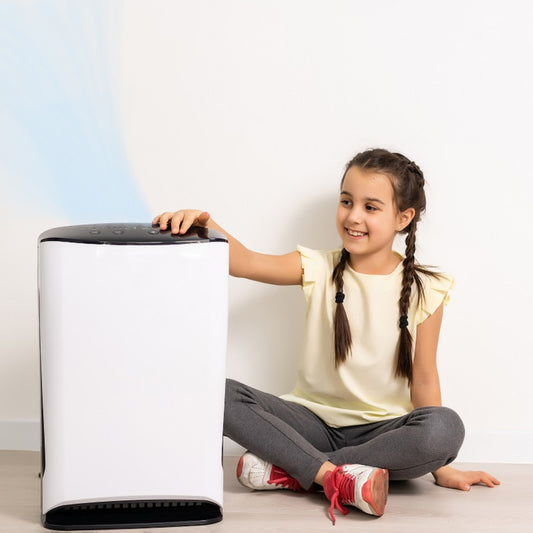Cotton has been around for thousands of years. This fabric was used in ancient India and Egypt centuries ago while both peasants and aristocrats wore such clothing. This fabric hasn't lost its popularity even now, but everyone who washes clothes is always interested in whether cotton is collected after washing. In this article, we will talk about the specifics of this great fabric and how it's supposed to be handled.
Cotton has many benefits:
- It's hygienic,
- It absorbs moisture well,
- It doesn't cause allergies,
- It feels pleasant to touch,
- It looks pretty,
- It's cheap.
Cotton is hygienic as products made of this fabric are easy to handle. In many cases, high temperatures can be used for no bacteria to survive. Cotton absorbs moisture perfectly, so summer clothes and underwear are mostly sewn from fabrics like cotton.
This is a material made of natural fibers, so it doesn't cause irritation, allergies, or skin diseases, of course, if clothes are properly taken care of and we don't allow them to get too dirty.

First Wash
Many things in the future use of cotton items depend on the first wash. Even if you usually wash in a washing machine, cotton should be washed by hand for the first time, especially if there are no synthetic fibers in the fabric at all. Add a little powder for natural fabrics (preferably with enzymes). Soak the product for fifteen minutes. Rinse and dry the item thoroughly.
Choosing a Washing Detergent
It's not that difficult to choose the right washing detergent. Many detergents are suitable for washing cotton products - both those intended for products made of natural fabrics and universal ones. However, there are a few things that should be considered. Pay attention to which fabrics the product is intended for - white, black, or colored. Also, make sure you always have bleach and fabric softener nearby - so you can wash cotton stuff, of course. A highly important thing is not to use chlorine-based bleaches to wash cotton items - they destroy both fabric and dye. Oxygen bleaching is preferred.

How to wash cotton so it doesn't shrink?
The first enemy of cotton fibers is heat. Of course, cotton sheets and waffle towels, as well as baby diapers, are sometimes cooked. But this can only be done with bedding that has been used for some time or if shrinkage does not play a big role. If you want to keep your clothes looking attractive, don’t overcook them. Quite the opposite - you need to use cold or slightly warm water.
How to wash cotton in a washing machine?
Washing cotton in the washing machine is easy and pleasant, only if you choose the right way. Any temperature is acceptable, it all depends on whether you're washing white or colored things and whether the fabric is thin or thick.
Colored things can fade if the washing temperature is too high. Therefore, the temperature should not exceed 100 degrees F.
White clothes can be washed at the maximum temperature. The best way is to set the thermostat to 200 degrees F.
Important! Do not wash cotton items together with synthetic items, even if the same cycle is suitable for both.

Selecting a Program
First, the laundry needs to be soaked. To do this, there is a special way of pre-washing or soaking in a washing machine. In that case, the detergent must be placed in two compartments of the container - A (1, I) and B (2, II). The first is for prewash and the second for the main wash. There is a special "Cotton" program for the main wash. It's best to choose that one although it's considered slow. Some high-quality machines have several programs for each type of fabric. As you've already sorted the laundry, it won't be difficult for you to choose the right one - for example, "Colored cotton" or "White cotton".
However, other options are possible. If the item is thin, made of colored fabric, not very dirty and you do not want it to shrink, it's best to choose a delicate wash setting by setting the thermostat to 80 degrees F. After washing, the product has to be stretched and dried in a horizontal position.
Cotton products are best dried outdoors, but not in the sun, from which the white fabric turns yellow and the color fades. In this case, it's advised to use pliers very carefully, which can leave strong wrinkles and bruises. It is better to use hangers.
Care For Cotton
Cotton, of course, is a fabric most likely to be worn out, but with proper care, it can still last a long time. These are the things you should take care of:
Be sure to check the label before first washing.
Don't let dirt get deeply into the fabric - wash your clothes right away.
Do not allow it to dry fully of you're ironing - in any case, the fabric needs to be ironed when it is wet.
Important - you have to follow the same rules if you have a dress or a T-shirt made of mixed materials with the addition of synthetic fibers. Synthetics are added to make things better in terms of shape. In this case, clothes and bedding can be air-dried.
Keeping Clothes From Shrinking
When choosing a fabric, pay attention to its composition. Even a small content of artificial fibers (dacron, polyester, nylon, viscose) will minimize the risk of shrinking. For pure cotton clothes, it's recommended to take one size larger, because it will fit you better after the first wash.
Shrinkage of woolen fabrics often occurs due to improper spinning or washing in hot water. Woolen clothing must not be bent or compressed. Dry it in a horizontal position, and spread it on a white cloth. Do not hang a woolen sweater on an ordinary clothesline: this will lead to the deformation of the entire product.
Strictly follow the care instructions on the label. Many woolen items, especially bulky ones, can only be dry-cleaned. Manufacturers recommend hand washing in warm water with the addition of fabric softener. To soften the water, put a few tablespoons of baking soda in it.
Cotton items are usable at any time of the year. As it's hygroscopic, hypoallergenic and due to its good ventilation, a person feels comfortable in it both in hot and cold weather. However, caring for cotton products requires special handling.
The basic requirements for clothing care are listed on a special label sewn to the inner seam or neck. With bedding and some accessories, the composition of the fabric and the rules of washing are usually indicated on the packaging.
On the other hand, if the washing instructions are not listed on the label, it's good to know something about taking care of the other variations of cotton.
Batiste
Batiste cannot be washed at high temperatures. The water should be heated to 80-100 degrees F. The best methods of washing to use are "sensitive" or "manual". It's recommended that you disable the spin function. Try not to twist or rub these products too much during hand washing.
Satin
This fabric is not afraid of high temperatures and can withstand water heating up to 190-200 degrees F. White satin fabric can be washed at maximum temperature, but for colored items, the preferred water temperature is no more than 100-140 degrees F, otherwise, the pattern may fade.

Calico
These items should be washed the same way as satin. You can use bleach powder for white laundry, but items with a pattern need to be washed with detergents for colored laundry as their special additives will keep the brightly colored items.
Flannel
This thick, and just a bit fluffy fabric can be washed at 100-140 degrees F. And, of course, for washing colored laundry, use detergents with enzymes, otherwise after a few cycles, your elegant things can become pale and unattractive.

Terrycloth
Terrycloth and towels can withstand high temperatures, but over time their fibers will become stiff and uncomfortable to the touch. Smaller and more simple stains can be perfectly removed with modern detergents at a temperature of 100-140 degrees F.
Denim
For jeans and other denim items, water heating should not be more than 100 degrees F, otherwise, even the high-quality paint will fade over time, and the item will lose its original look. To maintain the color, it's recommended to use special detergents for colored or black denim. If your denim items aren't so dirty they can be washed at 80 degrees F.
Cotton shrinks when washed if we don't follow the care instructions of this natural fabric. If you are not too lazy, look at the label for these instructions, and your cotton clothing item will keep its original look and size for a long time. Cotton fabrics have been popular since always. They keep you warm in cold weather and ventilate in the summer. This is why we should take good care of our cotton items.
However, if the quality of washing is not a matter of the way you're practicing it, it may be the time to treat your clothes with a new washing machine. And if this is the case, Town Appliance can offer you a great variety of choices on the world's most high-quality models for every budget.








